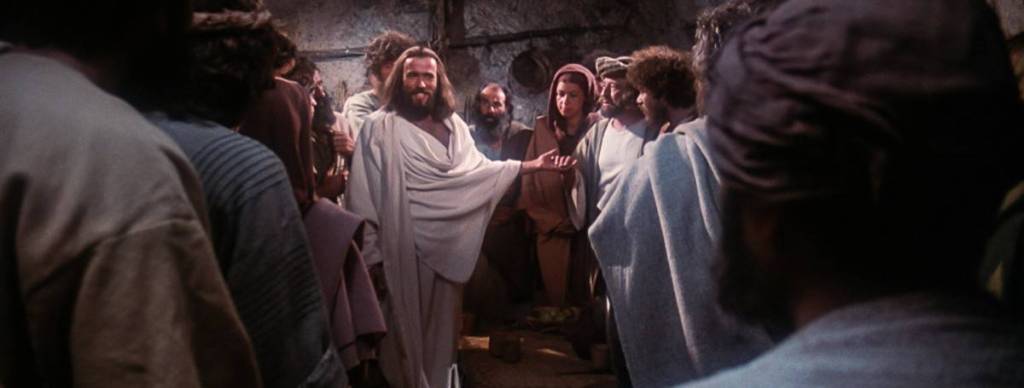The Bible gives us four accounts of Jesus’ life and ministry. Each account covers many of the same experiences from different perspectives. Some recount moments the others do not. And each was written in a specific context for a specific purpose, which affects how we understand its allusions, references, and framing. If you haven’t studied Matthew, Mark, Luke, and John closely, you may have trouble recalling what sets each of these books apart.
I’ve put together some observations about the Book of Matthew to help you see what makes this account unique. Here are eight facts about the Gospel of Matthew:
1. Matthew was primarily written for a Jewish audience
It’s widely accepted that Matthew was written for a Jewish audience. While the book doesn’t say “to my Jewish friends,” a mountain of context clues tell us that Matthew really wanted his audience to see Christ in relationship to Jewish tradition-which would have had little relevance to a Gentile audience.
Evidence that the Gospel of Matthew was written for Jews
From the beginning, Matthew paints a picture of Jesus as an undeniably Jewish man, descending directly from Abraham-patriarch of the Jews (Matthew 1:1-16). The book is also packed with allusions to the Old Testament-which a Gentile audience wouldn’t notice or care about-and Matthew frequently calls out the connections between Jesus’ actions and Jewish prophecy. While the other gospels frequently use the phrase, “the Kingdom of God,” Matthew uses “the Kingdom of Heaven”-a distinction that would’ve mattered greatly to Jews, who deeply revered the name of God. The Gospel of Matthew is also the only book to point out that Jesus came “not to abolish the law, but to fulfill it” and that “not the smallest letter, not the least stroke of a pen, will by any means disappear from the Law until everything is accomplished” (Matthew 5:17-18). This quote from Jesus roots his teachings in the tradition of Jewish Law-which was very important to Jews and much less relevant to Gentiles.
2. Five women are included in Matthew’s genealogy
In the culture Matthew was written, genealogies usually only included men. The Gospel of Matthew, however, lists five women, each of whom made Jesus’ genealogy more complicated.
Tamar pretended to be a prostitute to trick her father-in-law into impregnating her. Rahab was a prostitute who helped the Israelites capture Jericho. Ruth-from the Book of Ruth-was a widowed Moabitess, and Moabites were forbidden from entering the assembly of the Lord (Deuteronomy 23:3). The wife of Uriah is Bathsheba, with whom David famously committed adultery (and possibly raped). Mary, of course, became pregnant before she was married.
To a Jewish audience, including these women created questions, and this genealogy begins the Book of Matthew by telling a story of God’s redemption.
3. The symbol for the Gospel of Matthew is a winged man
In the second century, St. Irenaeus famously associated symbols from Ezekiel 1:1-21 and Revelation 4:6-8 with each of the four gospels. He suggested that the winged man represented Matthew: “This, then, is the Gospel of His humanity; for which reason it is, too, that the character of a humble and meek man is kept up through the whole Gospel” (Against Heresies).
4. The book contains more than 130 Old Testament quotes and allusions
As Jesus speaks, performs miracles, and makes decisions, the Gospel of Matthew highlights how Jesus’ ministry was prophesied about in the Old Testament. There’s no “messiah checklist” in the Torah, so the Jews pieced together their own picture of what the messiah would be like and how he would save Israel. These allusions helped Matthew’s Jewish audience see that Jesus was the one they were really waiting for.
5. Matthew repeatedly uses two phrases no other gospel uses
Both of the unique phrases repeated throughout Matthew have clear implications for the book’s Jewish audience. As I mentioned above, Matthew changes the phrase “the Kingdom of God” (used in the other three gospels) to “the Kingdom of heaven,” respecting the Jews’ reverence for the name of the Lord. The phrase is used 32 times in the whole Bible, and it appears in Matthew all 32 times.
Matthew also frequently says, “That which was spoken through the prophets might be fulfilled,” reinforcing the connection between Jesus’ life and ministry and the Old Testament.
6. The Book of Matthew is one of the three synoptic gospels
Matthew, Mark, and Luke have a lot in common, sharing many of the same accounts in the same order, with similar wording. These are the synoptic gospels: “an account of the events from the same point of view or under the same general aspect” (Oxford English Dictionary).
7. Matthew introduces Jesus as “Messiah”
To a modern reader, Matthew’s frequent interjections and references to the Old Testament slow down the action. You might feel like, “Okay, I get it, his life fulfilled prophecies,” but Matthew is deliberately connecting Jesus to Messianic prophecies in order to leave no doubt that he is the Messiah-the one who was promised, the long-awaited king of the Jews from the line of David.
8. Matthew is the only gospel that mentions the magi at Jesus’ birth
Commonly known as the “Three Wise Men” or the “Three Kings,” the magi came to worship “the king of the Jews”-the Messiah. Matthew doesn’t specify how many there are, but they brought gold, frankincense, and myrrh and the three gifts led to the common belief that there were three magi.
Share the gospel with others
Even when you know a lot about the Bible, it’s not always easy to share it with others. That’s why we’ve developed strategies and tools to help you make disciples-whether you’re an experienced missionary, or you’re preparing to share the gospel for the first time.
Explore tools and strategies for evangelism.
